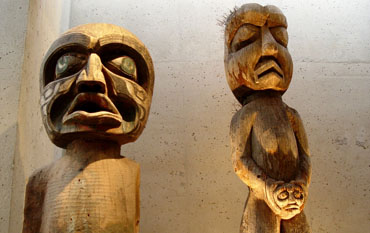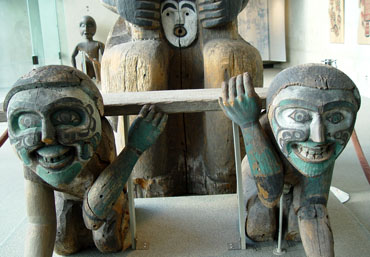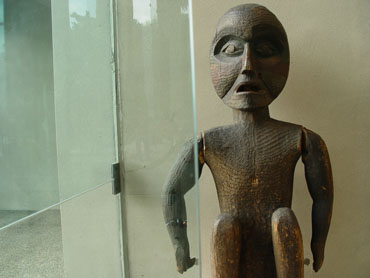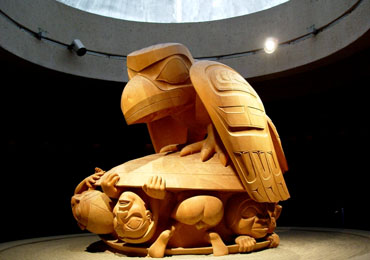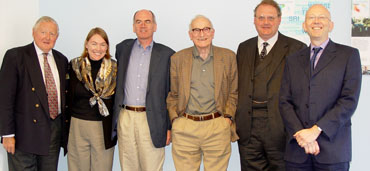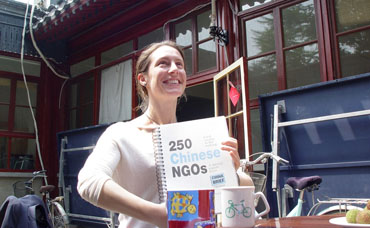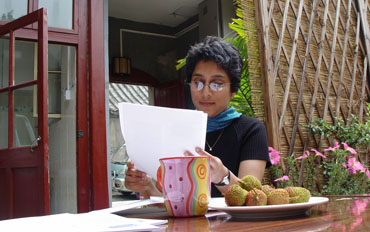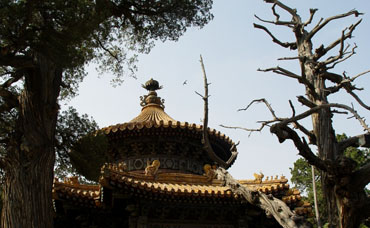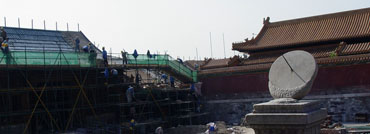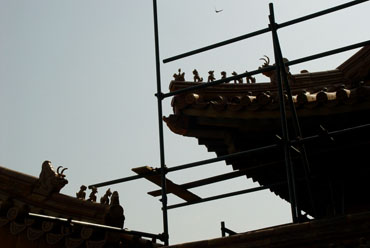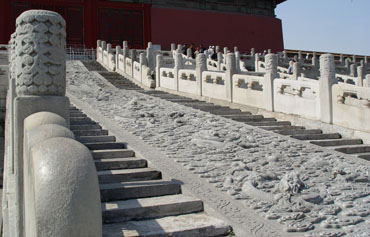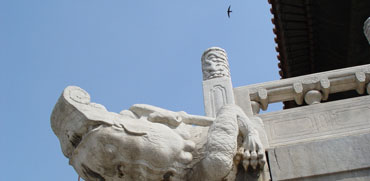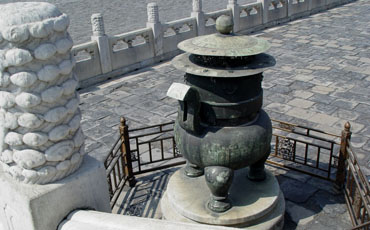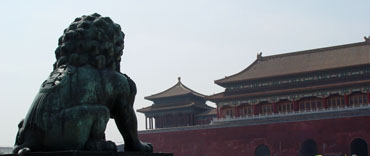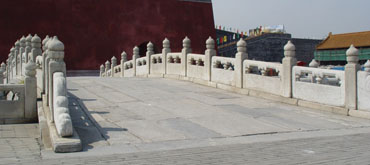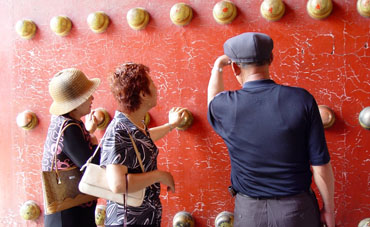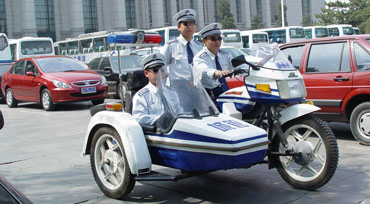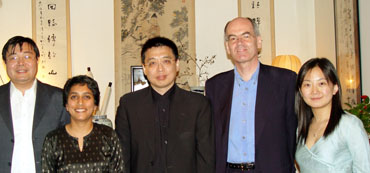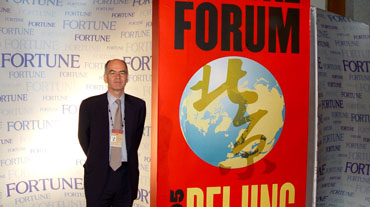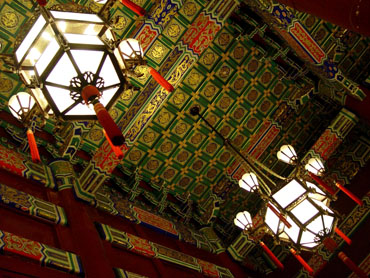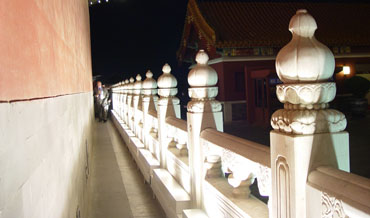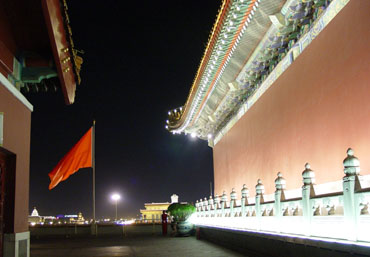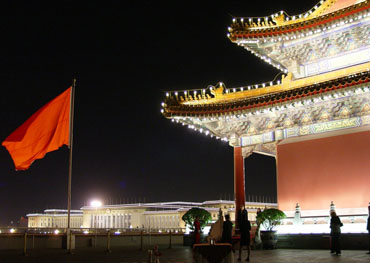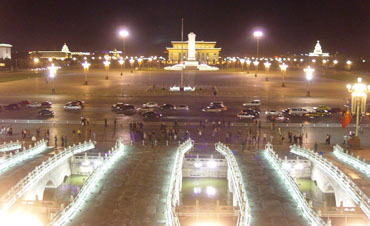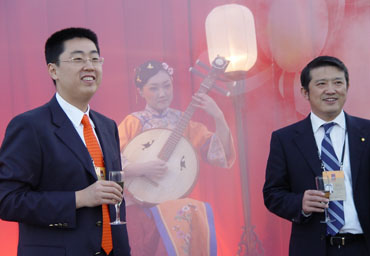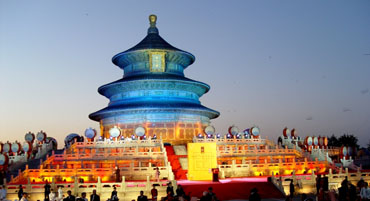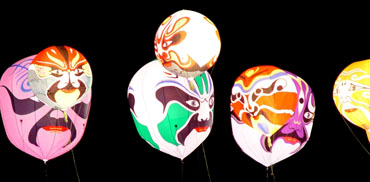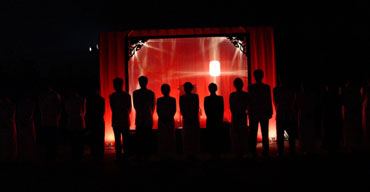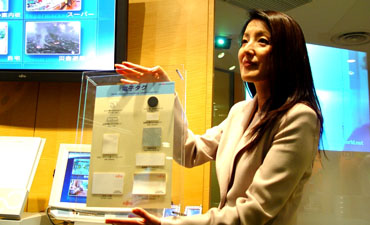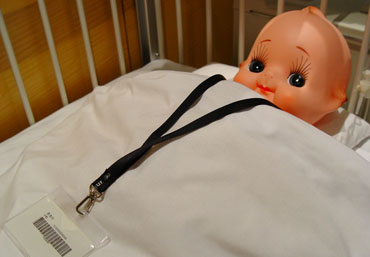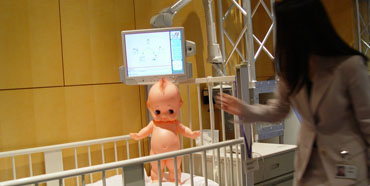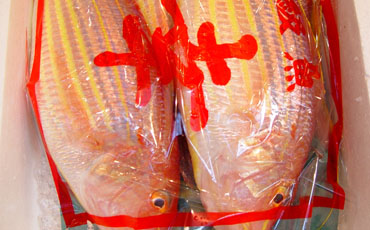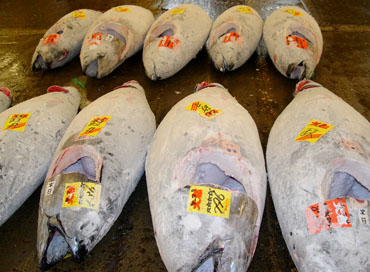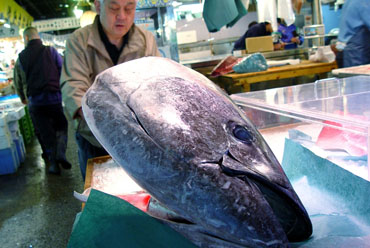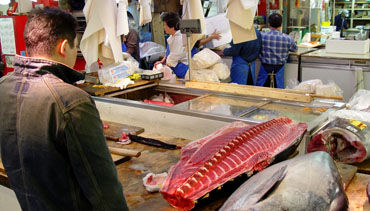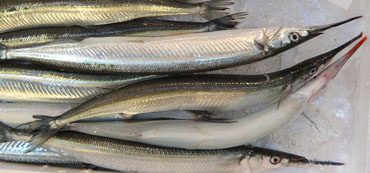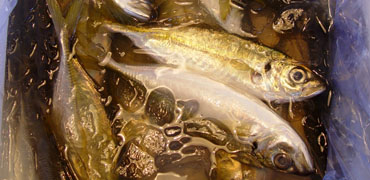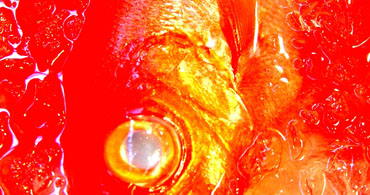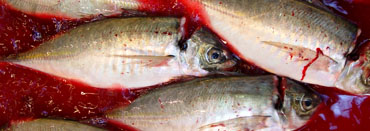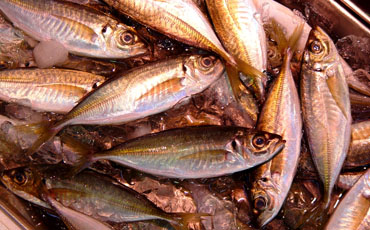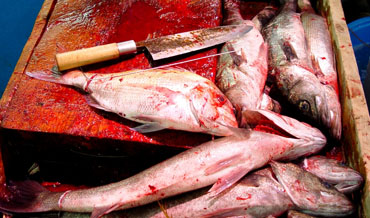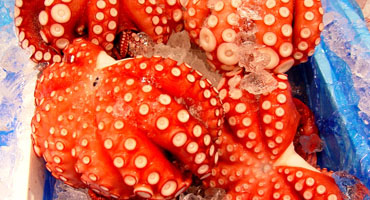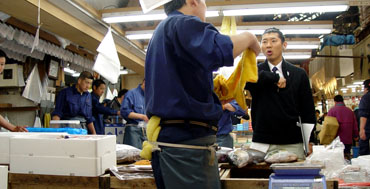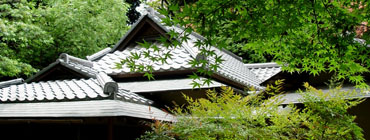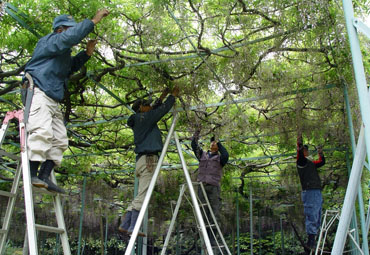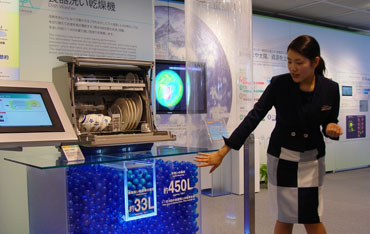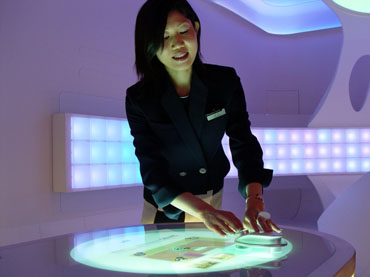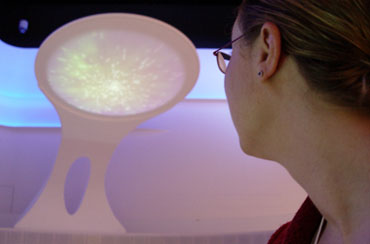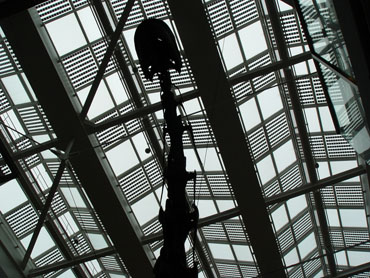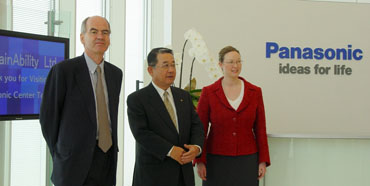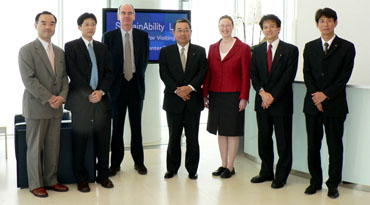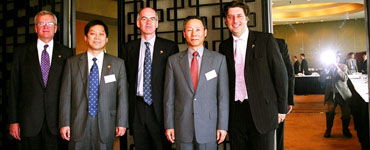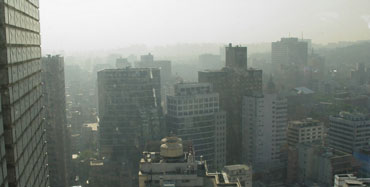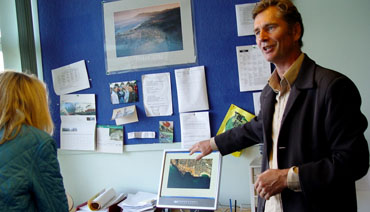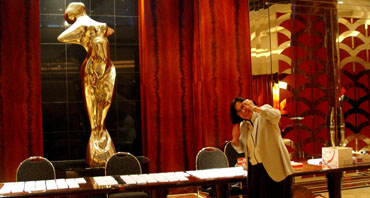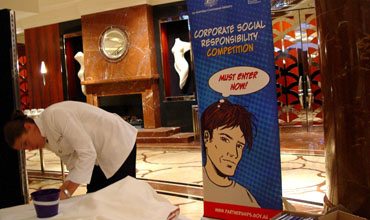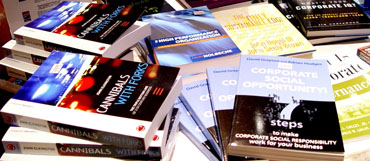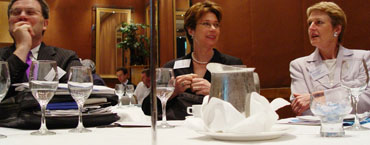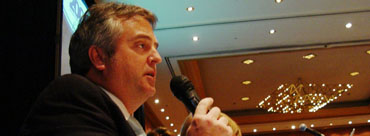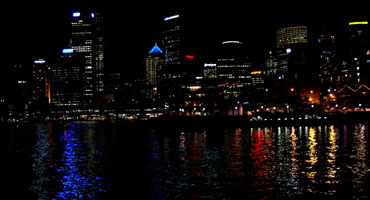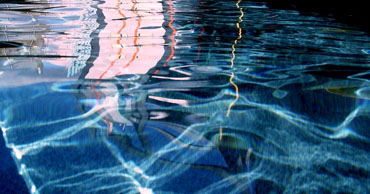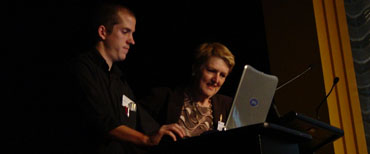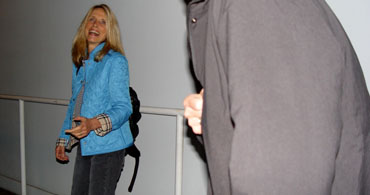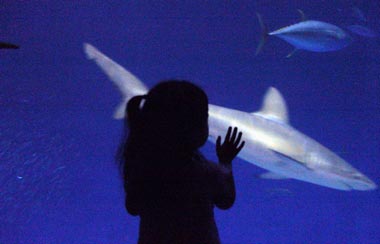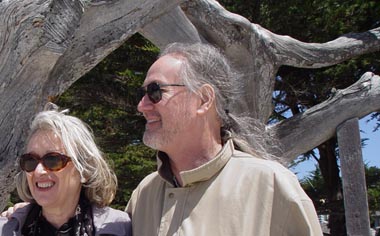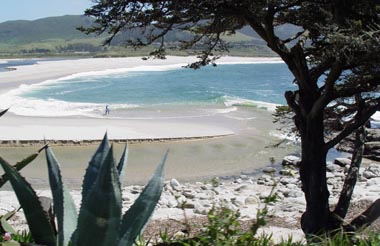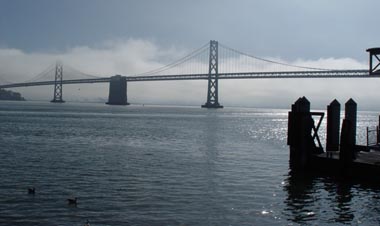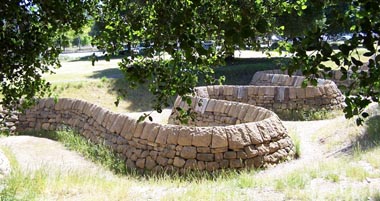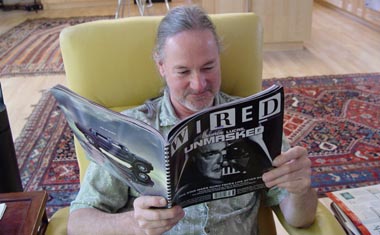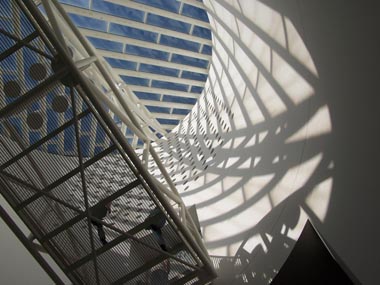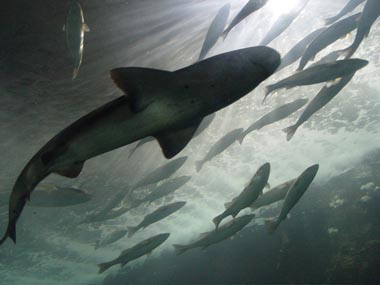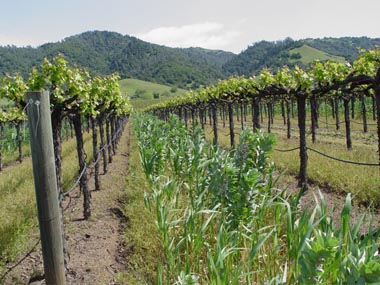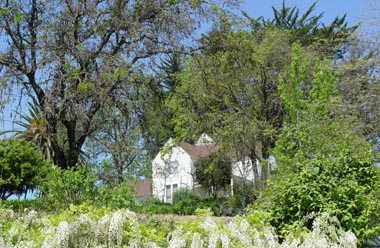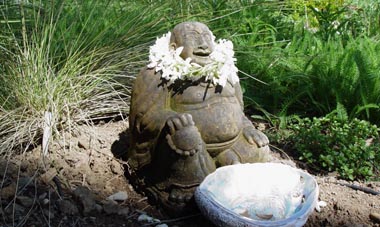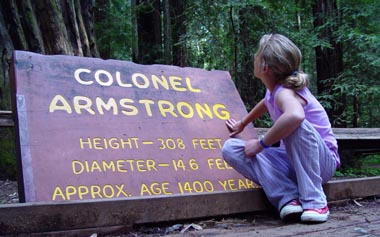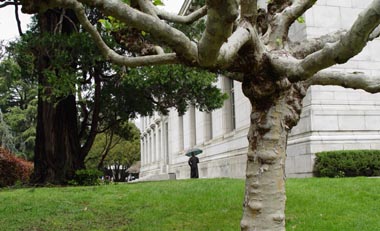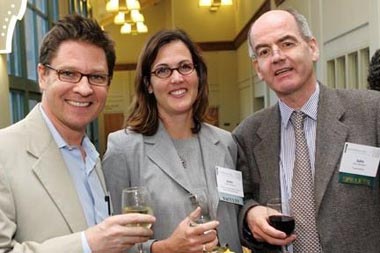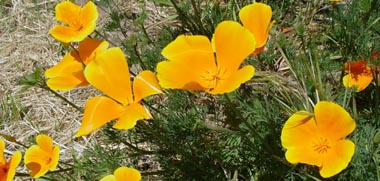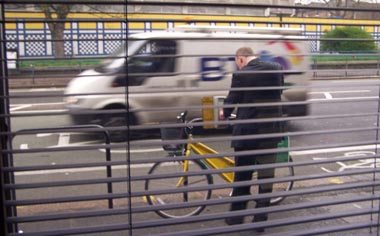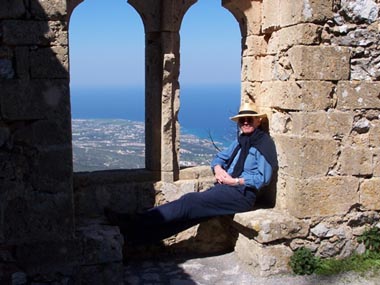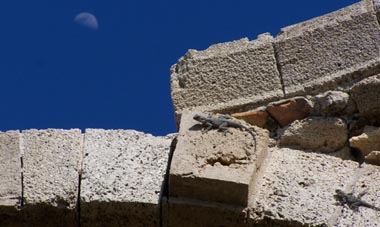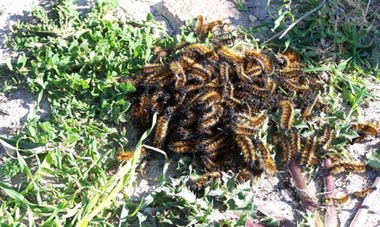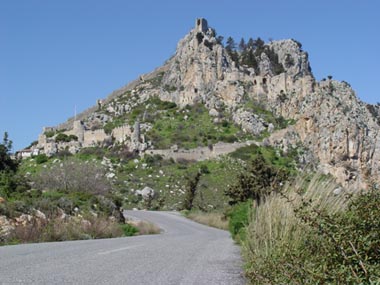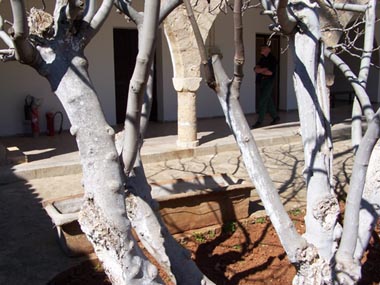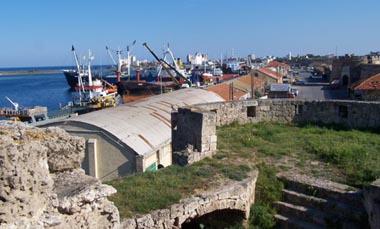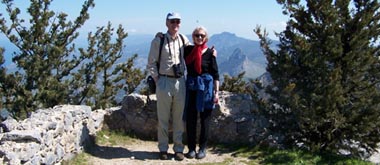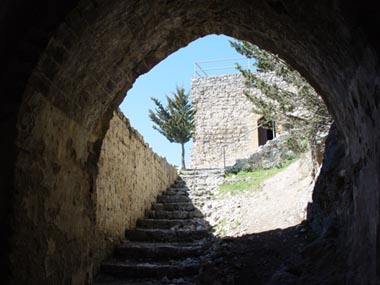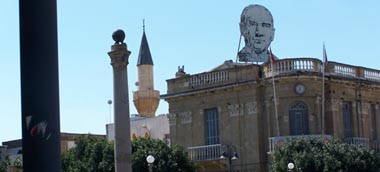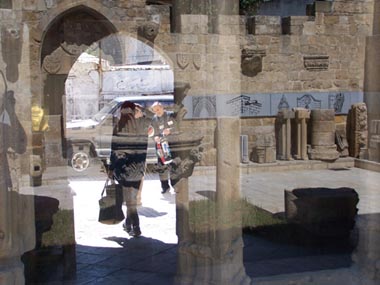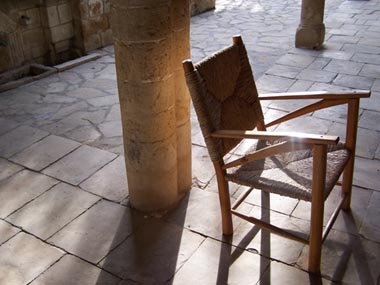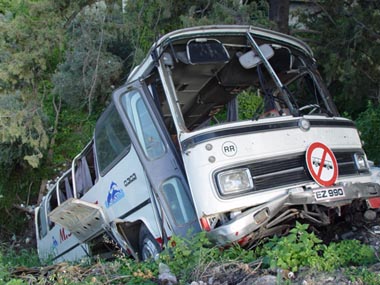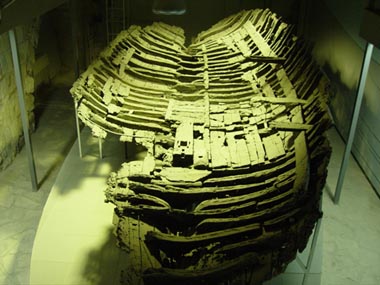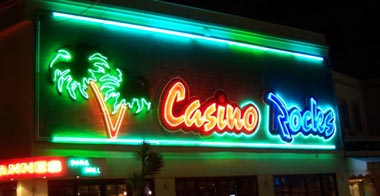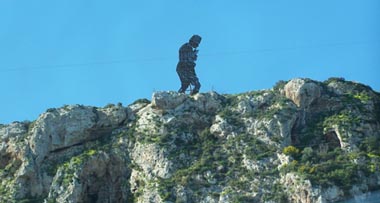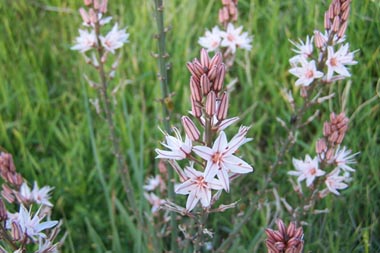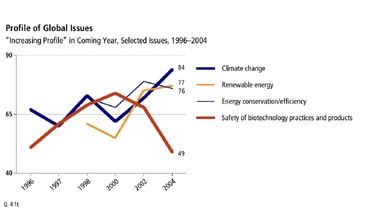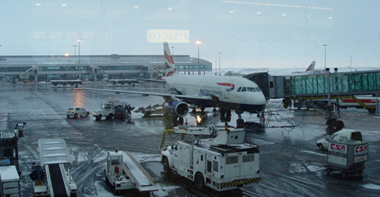Tuesday, June 28, 2005
NORMAL SERVICE …
Apologies. The host company for this website has managed to lose 40-50 of the photographs over the past week or so. We are doing our best to get back to the status quo ante – and to ensure, as far as possible, that this sort of meltdown doesn’t happen again. These days I use the website a fair amount to track down dates and contacts, so it has been a bit like – though I really shouldn’t say this – early onset Alzheimer’s.
DRENCHED
Cycle to and from the office today for the first time in ages, because of air travel and other constraints. Amazing sense of recharge. My eyes, though, come up in some form of allergic reaction to pollen or somesuch. Day of stakeholder interviews with Unilever, plus work on blended value paper for California Management Review. Then home, with the heavens opening as I cross Hammersmith Bridge. Even though I periodically take shelter under trees, I arrive home soaked. But, again, with lighting flashing the sky, it’s all quite invigorating.
Saturday, June 25, 2005
VERTICAL SPEED INDICATOR
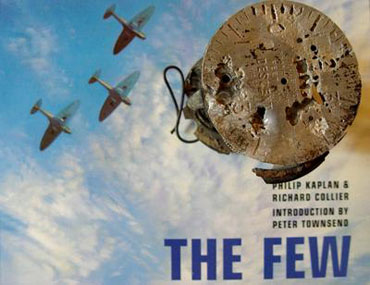
Age-eaten vertical speed indicator atop pristine book cover
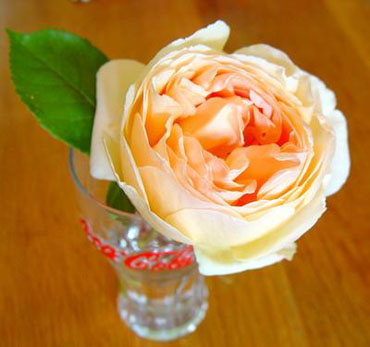
Jude the Obscure: dangerous rose
First, across to lunch with David Grayson in Kennington. Typically, I forget the address and instructions on how to get there, and am only saved by the fact that David comes out to greet another guest and spots us passing. Then Elaine and I drive down to the Cotswolds to stay with my parents at Hill House.
During the stay my father, Tim, gives me the vertical speed indicator recovered by archaeologists from the Hurricane in which he was shot down in 1940. It’s amazing how Meccano-like the workings are behind the dial. The tin or aluminium face is eaten away by either water or by the fire that engulfed the machine 65 years ago. Some sense of where the instrument came from can be got from the following image (http://www.historicaircraftcollection.ltd.uk/images/hurricane_02.jpg), where it is found on the top right of the four dials around the aircraft’s control column.
While walking around the Hill House garden, I am taken – once again – by the scent of one rose, Jude the Obscure. One of the flowers later turns up on the kitchen table. The rose also turns out to be the one that savaged Tim a while back, when he fell into it. His arms still show the bloody scratches. They’re all out to get him. If it isn’t the Luftwaffe, it’s flowers.
Thursday, June 23, 2005
TIM O’RIORDAN
Spend my fifty-sixth birthday in Norwich, at the University of East Anglia, at a conference on governance and sustainability. The event, at ZICER (Zuckerman Institute of Connective Environment Research, www.uea.ac.uk/zicer/) is in honour of the impending retirement of a long-time colleague and friend (and a member of SustainAbility’s Faculty), Professor Tim O’Riordan (http://www.uea.ac.uk/env/cserge/people/tim_o).
Stunning evening and dinner at the Cathedral, or at least in the newly built refectory alongside. One of the most successful examples I have seen of the integration of deeply historic architecture and sympathetic modern building. Tim plays double bass in a small orchestra playing Mozart and Elgar. Spend much of the evening talking with Jonathon Porritt and Angela Wilkinson (of Shell) about prospects for next 15-20 years, arguing that we are likely to see at least one discontinuity on the scale of 1929.

Tim on double bass
Wednesday, June 22, 2005
SLOWLY LEADING THE WORLD?
Bevy of meetings, including an unexpectedly fascinating one with Stephen Jordan of the American Chamber of Commerce (http://www.uschamber.com/ccc) Corporate Citizenship Center and another with Unilever as part of a stakeholder process SustainAbility is doing for them. In between times, I drafted an article on the energy prospect for Chevron, which Jeff Erikson in our DC office had asked me to do last night.
Then on to the Sustainable Development Commission’s ‘Leading the World?’ pre-G8 summit event. Jonathan Dimleby chaired, Jonathon Porritt (who chairs the SDC) concluded, and the weather steamed. Somewhat frustrating process, but the evening ended with a slow food dinner which drove home many of the sustainability points the evening’s speakers had been trying to make at a more abstract level. This part of the event was organised by Slow Food UK (http://www.slowfoodfoundation.com): wonderful people presenting wonderful food.
Tuesday, June 21, 2005
WSBF CSR FORUM
Started the day in Westminster, speaking at a conference organised by the Westminster Sustainable Business Forum (www.wsbf.org.uk). Founded in October 2004 by Networking for Industry (NFI), the Forum is focusing on such areas as business ethics, climate change, corporate social responsibility, green procurement and public/private partnerships. Good turn-out, interesting people but the first session ran way over, so my presentation time was cut in half. With Richard (Lord) Holme in the chair, I did it on the fly and raced on for a lunch with Shell people – which was enormously interesting in terms of wider trends in our field.
Monday, June 20, 2005
NEW ECGD ROLE
After meeting with Innocent Drinks, I head across to Canary Wharf for meeting of the advisory council of Export Credits Guarantee Department (ECGD). This is Liz Airey’s last meeting as Chair of the advisory council – and my appointment as her successor in the role is press-released today (http://www.ecgd.gov.uk/news_home.htm?id=6543).
INNOCENT RUMINATIONS

My udder van is …
After (separate) meetings in the office on Shell and Microsoft, and with the sky rocked with thunder, I streak westwards to Hammersmith for a meeting with Jon Wright of Innocent Drinks (http://www.innocentdrinks.co.uk). Having already been seduced by their smoothies and their vehicles (http://www.innocentdrinks.co.uk/us/us.html), I was keen to see whether they would fit into our blended value piece for California Management Review. Mercifully, particularly after a fast-paced walk to meet co-founder Jon Wright at ‘Fruit Towers’, all of this through conditions worthy of Kuala Lumpur, I find that they do.
Saturday, June 18, 2005
PARISIAN REFLECTIONS
Paris, by Eurostar yesterday morning. Last night we had dinner with David Vogel, who edits the California Management Review, and his wife Virginia. Am writing him a paper on different forms of value, with Jed Emerson and Seb Beloe. Today my brain is playing with colours, so a walk around Paris today with Elaine turned into a sequence of reflections on the spectrum, colours and reflections. We walked around the Rive Gauche, including the Musee d’Orsay, then up to Montmartre by Metro to see a strange but interesting Dali exhibition, then back to Rive Gauche. Glorious weather.
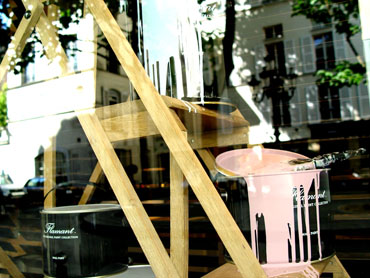
Dripping paint
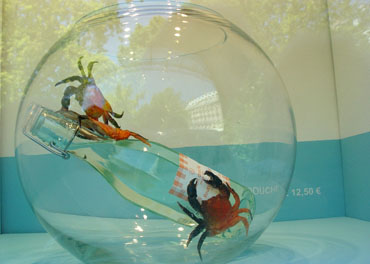
Crabs
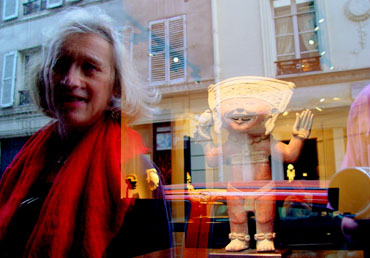
Elaine and womannequin

Two heads
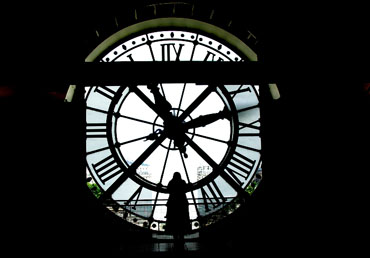
Woman looking out towards Montmartre
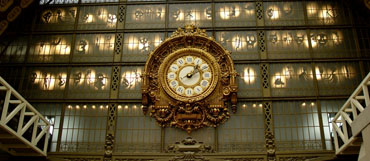
Shadow puppets
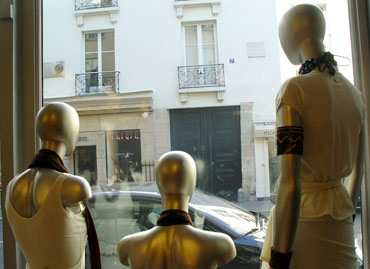
Three mannequins

Dancer
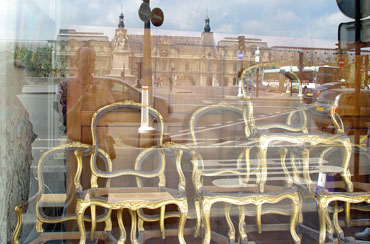
Gilded chairs
Wednesday, June 15, 2005
BSR UP BT TOWER
Interesting evening session with Business for Social Responsibility (BSR – http://www.bsr.org), co-hosted by BT, in the BT Tower complex. Before the roundtable started, we all trooped up to the top of the tower to look out over London, a nice parallel for what corporate boards increasingly need to do – get the big picture, the 360-degree view. One striking thing about the view from the top of this eyrie: how small the distant City looked, for all its financial power.
The theme of the session was the need for convergence between the corporate governance and corporate (social) responsibility agendas. One interesting sign of the times: Dr Chris Tuppen, who has handled the environmental, social and sustainability agendas for BT since at least the early 1990s, has now moved into the Company Secretary’s office.

View from BT Tower east towards the City
Tuesday, June 14, 2005
BLOWING IN THE WIND: HITLER
Finished reading Until the Final Hour, Traudl Junge’s account of her time as Hitler’s secretary. Used as basis of the film Downfall. Astounding. So much is in the detail, like the mention of the wife of Baldur von Schirach (her name isn’t given) who asked Hitler at tea-time about the rumours of the tribulations of the Jews deported from Amsterdam. Painful silence. Hitler gets to his feet and withdraws. “Apparently she had exceeded her rights as a guest and failed to carry out her duty of entertaining Hitler,” says Traudl. Then, towards the end of the story, the suicides in the bunker. “The most powerful man in th Reich a few days ago, and now a little heap of ashes blowing in the wind.”
Monday, June 13, 2005
MOLLY & MARCH
Wonderful evening at Cafe Fish, near Piccadilly Circus, with Elaine, Molly March (who I first met in Cyprus in the late 1950s: see Cyprus link on homepage, http://johnelkington.com/pubs-unpublished-cyprus.htm), her daughter March, March’s friend Mark, and March’s father, Nick Hutchinson.
Before heading across there, I dropped into Virgin records to get Ry Cooder’s latest album, Chavez Ravine. A “post World War II era American narrative of ‘cool cats, radios, UFO sightings, J. Edgar Hoover, red scares, and baseball’, the CD is a tribute to the erstwhile Los Angeles Latino enclave known as Chavez Ravine, bulldozed by developers in the 1950s in the process of building the Dodgers Stadium. Also bought a best-of compilation of Ringo’s All Starr Band (had been struck by his rendition of ‘Photograph’ during the ‘Concert for George’ celebration of the life and work of George Harrison) and the first CD from The Magic Numbers, which was playing as I was paying.
Amazing the impact music has: Molly and I talked about the Beach Boys, who we both woke up to in the early 1960s, and about skateboarding. She used an ironing board atop some old roller skates. When I used to skateboard at Bryanston, our boards’ wheels used to seize solid every time they hit a piece of grit, resulting in several chips out of my teeth. Odd coincidence: Nick went to Bryanston, too. Molly had recently met four ex-Bryanstonians. I asked her what she saw as the common characteristics. Confident, questioning, humorous, she began, and I stopped her before the list went negative!
The trigger for the Beach Boys discussion was that I had watched The Beach Boys: An American Family yesterday on Channel 5, directed by Jeff Bleckner and first released in 2000. Highly engaging – and surprisingly accurate – profile.
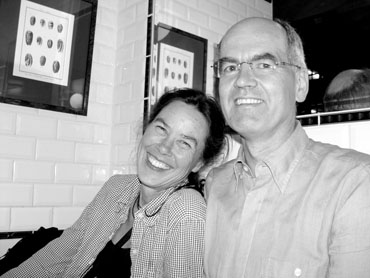
Molly March, me, Cafe Fish
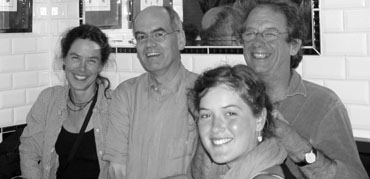
Molly, me, March, Nick
Saturday, June 11, 2005
GAIA GOES WEST
Gaia and Hania here overnight, ahead of driving to Somerset for a party. Snap Gaia in her feathers in front of a painting that Elaine and I bought many, many years ago, which reminded me of the heights of the Aztec and Inca eras. So something of a clash of eras, but I thought the reds went together nicely.
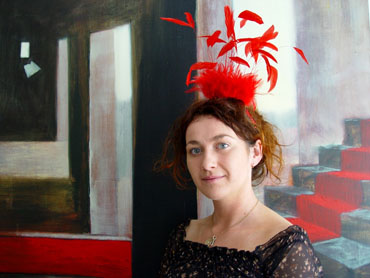
Friday, June 10, 2005
GEORGE BUSH: AMERICAN CYCLOPS
What follows is a piece that popped into my head – more or less fully formed – at 03.00 in the morning after I flew back from Seattle. Intemperate, maybe. And some of my colleagues say that the real issue is how the sustainability movement can work with right-wingers. Well, maybe. But I feel increasingly angry at the extraordinary damage that George Bush and his colleagues are doing to the reputation of America, around the world. And I am also dumbstruck by the idiocy of much current American foreign policy. Europe, to put it mildly, is not without its idiocies, but – for better or worse – the US current has the greater global responsibilities, not least because it has taken them upon itself. Let the piece stand as a matter of record:
GEORGE BUSH II: AMERICAN CYCLOPS
The future of the United States is increasingly threatened by the monocular vision of its President.
In the unlikely event that the head of President George W. Bush ever appears among the giant presidential sculptures of Mount Rushmore, it is increasingly – worryingly – obvious that he would best be rendered as an American Cyclops. It is also clear that his aggressively monocular vision, powerfully inflamed by the 9/11 attacks, endangers the future both of his own country and, to a degree, much of the rest of the world.
On the threshold of a new century, and very much like the original Cyclops described by Euripides around 408 B.C.E., George W. Bush stands in the mouth of the world he knows, still enraged, blinded and desperate to capture the intruder who thrust the “blinding brand” into his face. Wait a moment, you may say: it is Osama bin Laden who (if he still lives) who is hiding out in caves, not the President of the world’s current hyper power. True, but caves come in many forms, some self-imposed.
Maybe it was inevitable that the Clinton administration’s sticky-fingered interest in exploring every last aspect of any area of policy would produce an opposite and at least equal reaction. Whatever, the troglodytic reflexes of the current administration were again exposed with the New York Times leak of papers showing how Philip Cooney – chief of staff for the White House Council on Environmental Quality – repeatedly intervened to water down and subvert the conclusions of scientific reports on the likely impacts of climate change (http://www.nytimes.com/2005/06/08/politics/08climate.html).
Caveman politics
We can argue about the scale of the problem, but the underlying pattern is clear. Whether it involves deciding war and then force-fitting the facts to provide a strategic case or airbrushing the science where it is likely to offend the delicate sensibilities of the President and his funders, this is a caveman administration that finds anything approaching binocular vision unsettling.
You need look no further than its own staffing policy. It is surely no accident that Cooney – who seems happy to wade into the scientific debate without having himself any form of science background – is a former oil industry lobbyist. Much of his job seems to have involved inserting the words “significant and fundamental” every time he saw the words “uncertainties” in reports and policy papers on climate change.
Destructively, the Bush administration seems to be boxed in both by its own ideology and by the narrow self-interest it has consciously set out to promote among ordinary Americans. As a result, growing numbers of American citizens and voters are afflicted by an increasingly pernicious form of tunnel vision. A question worth asking: Are we seeing the early stages of America once again retreating into its shell? One litmus test of this trend will be what happens with Ford and GM. Toyota chairman Hiroshi Okuda has been fretting in public that the collapse of the Big Two Detroit auto-makers into their current junk bond status could trigger U.S. moves against foreign auto-makers. A couple of months back he even suggested that Japanese auto-makers should try to help Ford and GM by raising the price of cars sold in the U.S.!
Naturally there are also some hopeful signs. Whether you walk around the streets of San Francisco or around Microsoft’s car-parks in Redmond, on the leafy outskirts of Seattle, you will see surprising numbers of Toyota’s Prius hybrid cars. People are buying them because they are wonderfully fuel efficient a time when gas prices are soaring, but also – they say – because they look ‘cool’.
At last Japanese auto designers have grasped something that Apple’s Steve Jobs has long known: design sells – and it can sell sustainable products, not just unsustainable ones. But for the moment it is clear that most Americans remain cocooned in their glistening SUVs, their ears lulled with their iPod comforters, all blissfully unaware of just how different the twenty-first century will be to the twentieth, dubbed by Harold Evans and others as ‘The American Century’. Like all incumbents, their very success has blinded them to how fast the world can change.
The second Republican Cyclops?
Having arrived in the U.S. after a 5-country tour that took in South Korea, Japan and China, I had momentarily returned to London en route thinking that Tom Friedman’s recent book The World Is Flat may even understate the scale of the longer term threat – economic, political and perhaps most fundamentally cultural – to U.S. hegemony in each and all of these areas. And while the politics of the cities of the U.S. and Canadian west coasts tend to much more progressive than in these countries’ heartlands, the mood I found in the U.S. worried me profoundly.
No-one disputes that there are Cyclopean – or should it be Cycloptic? – tendencies in Europe or in countries like China. But at the moment what happens in the U.S. is likely to be crucial in shaping the policy agenda for the next decade or so. When the Cyclops metaphor first flashed into my mind on the flight back to Heathrow from Seattle it seemed to capture the almost mythic scale of the changes now under way. But before deciding to use it, the reptilian part of my brain wondered whether someone else had already laid claim to the phrase ‘American Cyclops’? Googling, I discovered that, once again, there is not much new under the sun.
That said, the main reference dated back to1868, when James Fairfax McLaughlin used it to headline a satirical attack on Ben Butler, the ‘Black Republican’ Union Civil War general – and a notorious carpet bagger. Butler’s high-handed rule in New Orleans and elsewhere in the South in 1862 earned him the sobriquet ‘Beast’ and soon had him removed from office. Today, with reports of systematic torture in Iraq and elsewhere, alongside the twenty-first century forms of carpet-bagging practiced by the likes of Halliburton (contrast http://www.halliburtonwatch.org or http://www.corpwatch.org with http://www.halliburton.com), George Bush II seems well down the same slippery slope.
So how, in God’s name, did Bush II get back into office with a significantly improved majority? Among the more convincing answers to the question is that proposed by University of California professor of linguistics George Lakoff. On a visit to San Francisco earlier in the year, I came across his work on the framing of social issues with the Rockridge Institute (http://www.rockridgeinstitute.org) – and after reading his book, Don’t Think of an Elephant: Know Your Values, Frame the Debate, suggested it should be required reading for all my colleagues at SustainAbility. Or, at least, Lakoff’s four key points on the uses – and the many abuses by those driving the current Republic agenda – of framing in politics (http://www.rockridgeinstitute.org/projects/strategic/simple_framing/view).
Perfect Storm, 2016
And just in case all of this seems comfortably remote, perhaps I can commend one other recent (and fairly mind-warping) article. In the July/August issue of The Atlantic Monthly, James Fallows posits a “perfect storm” in which the U.S. economy implodes. Among the factors that come together to collapse the economy and drive a complete outsider into the Presidency in 2016 were: the frailty of the relationship between the U.S. and China (which had essentially been bankrolling the U.S. deficit for years); the fourth – and worst – oil shock; a run on the dollar; a tsunami of bankruptcies; the evaporation of lifetime savings; and a domino effect cascading through every level of government funding.
For me, one of the most credible outcomes – though no doubt Hiroshi Okuda would prefer that this wasn’t noised abroad – was the take-over of Ford and GM by Toyota. As Fallows puts it, the 2012 takeover had a grim inevitability. “Over the previous decade,” he writes, “the two U.S. companies had lost money on every car they sold. Such profit as they made was on SUVs, trucks, and Hummer-style big rigs. In 2008, just before the oil shock, GM seemed to have struck gold with the Strykette- an adaptation of the Army’s Stryker vehicle, so famous from Iraq and Pakistan, whose marketing campaign attracted professional women. Then the SUV market simply disappeared. With gasoline at $6 a gallon, the prime interest rate at 15 percent, and the stock and housing markets in the toilet, no one wanted what American car makers could sell. The weak dollar, and their weak stock prices, made the companies a bargain for Toyota.”
Fallows foresees an end to 164 years of two-party rule in the US. The new President, an independent, is taking over from a military hero, the man who famously captured Osama bin Laden in the Saudi Arabian desert in 2011 – and who was elected to the presidency in 2012. The challenge, as it is laid out in a brief for the incoming President, is three-fold:
“Our country no longer controls its economic fundamentals.
“Compared with the America of the past, it has become stagnant, classbound, and brutally unfair.
“Compared with the rest of the world, it is on the way down. We think we are a great power – and our military is still ahead of China’s. Everyone else thinks that over the past twenty years we finally pushed our luck too far.”
The optimist in me tries to believe that the U.S. will once again be spurred to action by the urgency of the threats. But, like climate change, the very nature of many of the challenges that blend into that perfect storm less than a decade from now are that they build slowly and often imperceptibly. Without clear-eyed political leadership, the bleak scenario seems increasingly likely. And the implications for the rest of the world, increasingly hooked onto the U.S. economy, are equally dire.
Hold on, Arnie’s coming
Of course, there are bright spots against the gloom – and not simply those sun-hazed Priuses as you walk around Microsoft’s parking lots. For one thing, there’s ‘The Terminator’. On June 1st, for example, as part of the UN’s World Environment Day celebrations, Californian Governor Arnold Schwarzenegger vowed to tackle global warming in the state. He declared the debate on climate change “over”, announcing a climate change plan with targets to reduce emissions of greenhouse gases to 2000 levels by 2010, 1990 levels by 2020, and 80% below 1990 levels by 2050. If all goes to plan, the 2010 target equates to an 11% reduction on business-as-usual.
It’s supremely ironic that the man driving progressive politics in the sunshine state is a Republican. As the Climate Group notes, the messages emanating from the Governor’s office reinforce the progressive policy measures both in place and in development in California, covering sectors from power generation through to transport.
“For example,” the Climate Group reports, “California state lawmakers recently passed the Pavley Bill, which will reduce greenhouse gas emissions from motor vehicles put on the market from 2009. These regulations are expected to cut greenhouse gas emissions from new cars by 30% by 2016. And in 2002, the state implemented a Renewables Portfolio Standard stating that renewable energy must be the source of 20% of the electricity sold by 2017. In his speech, the Governor pledged to accelerate this commitment to 20% by 2010 and 30% by 2020.”
Significantly, a key message at the heart of Governor Schwarzenegger’s speech was that these measures, and the new targets, will not compromise economic growth, rather they will promote innovation and business opportunities in the state. As he stressed said, “together we can meet the needs of both our economy and the environment. Together we can continue California’s environmental heritage and legacy of leadership in innovation in cutting-edge technology.”
Nor is Governor Schwarzenegger alone in spotting the emerging opportunity space. The recent unveiling by General Electric Chairman and CEO Jeffrey Immelt of the company’s new ‘Ecomagination’ strategy has won widespread praise. The company has pledged to spend $1.5 billion a year on such research by 2010, more than double the $700 million it spends currently.
Immelt also noted that GE aims to double the revenue goal over that period for products that provide better environmental performance, to $20 billion a year, and expects more than half of its product revenue to come from such products by 2015. At the same time, GE promises to reduce the greenhouse gas emissions of its factory operations 1 percent by 2012. Without the initiative, those emissions were expected to increase 40 percent, GE said.
Gearing down
But even an optimist must admit that there is a very large fly in this ointment. Having devoted nearly thirty years of my life to opening up business to the market risks and opportunities created by sustainable development in general, and by environmental issues like climate change in particular, it is increasingly clear to me that governments will need to play a central role in shaping twenty-first century markets.
Indeed, this is a line we pursued in a recent report for the UN Global Compact, Gearing Up: From Corporate Responsibility to Good Governance and Scaleable Solutions (http://www.sustainability.com/insight/scalingup.asp). And it’s also a key reason why SustainAbility has focused on corporate lobbying in recent years, most recently with a review of the level of transparency public policy positions among the world’s biggest 100 companies – the subject of a report due out at the end of June.
Jeffrey Immelt has also waded into the debate, noting that he would like the U.S. Congress to pass an energy bill setting “clear milestones” to reduce greenhouse gas emissions – so that companies would know clearly how to invest to achieve them. The bill should include market-based mechanisms to encourage businesses to cut pollution, such as caps with incentives or the ability to trade emissions credits, he said.
But the current signals from White House – or Cyclops’ Cave – are pretty clear, and leave little room for optimism. Someone I met while in Seattle is Denis Hayes, co-founder of the Earth Day movement in 1970 (http://www.earthday.org) and now President of the Bullitt Foundation (http://www.bullittfoundation.org). When I first met him, in 1981, he was still running the Solar Energy Research Institute (SERI: now the National Renewable Energy Laboratory, http://www.nrel.gov), which had just heard that newly elected President Ronald Reagan was going to defenestrate him and hack away at SERI’s budget. Having survived one axeman Republic president, he now worries that the Republicans seem set on creating financial crises that force the closure or castration of many key environmental programs.
Some caveman politicians will never get over the run-for-the-bunkers mentality shaped by the Cold War. But, as Hayes noted in a recent column in The Seattle Times, “the greatest threats facing the world today are not Soviet bombers but major environmental changes. The earlier we learn of such threats, the better our chances of mitigating their damage.” Among the examples he gives are climate change, the El Nino cycle, tsunamis and invasive species. In the Cold War, Americans accepted the need for “distant early warning,” investing huge amounts of money in the DEW Line to detect incoming nuclear bombers or missiles.
To those who argue that the private sector should take over many of the environmental early warning programs run by such agencies as NASA, the National Oceanic and Atmospheric Administration (NOAA) and the National Science Foundation, Hayes counters that “information produced by such research is, by its very nature, a ‘public good’. It benefits everyone, and it is most valuable when it is universally distributed. Hence, little, if any, distant early warning research will ever be conducted and disseminated by the private sector.”
Ironically, but again not accidentally, the American Cyclops has ordered major cuts in the budgets of basic environmental monitoring and research programs at NASA, NOAA and the NSF. It’s almost as if some giants prefer to run blind. It may be said that in the land of the blind the one-eyed man is king, but after my recent world tour I believe that the American Cyclops is handing the new century to others.
Thursday, June 09, 2005
MUSEUM OF FLIGHT
Took the opportunity on my way out to the airport to drop off for a couple of hours at Seattle’s Museum of Flight (www.museumofflight.org), which includes the (currently under refurbishment) Red Barn in which the Boeing Company started in 1916. Probably 20 years since I was last there and was as impressed as last time. It may not be politically correct, but I still find many of the aircraft of the 1930s and 1940s really beautiful – and the collection includes such favourites as a (in this case Goodyear) gull-wing Super Corsair, a twin-boom Lockheed P-38 Lightning, a North American P-51 Mustang and a Supermarine Spitfire Mark IX. But the most spectacular of all the planes in the museum has to be the Lockheed SR-71 ‘Blackbird’ (www.sr-71.org). This air-breathing monster set air speed records that remain unbroken after more than 25 years.

Foreground, the pedal-powered MacReady Gossamer Albatross II
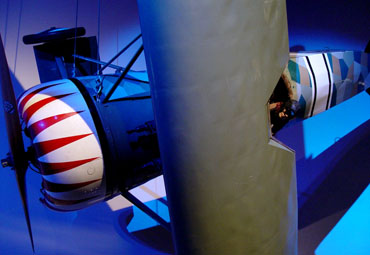
Fokker D-VIII monoplane, introduced too late into WWI to make a difference

Nose-to-nose: Supermarine Spitfire and Messerschmitt Bf-109
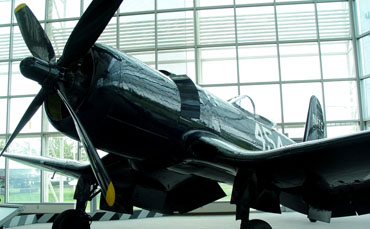
Super Corsair, late WWII variant
Wednesday, June 08, 2005
A DAY IN SEATTLE
Yesterday, a reasonably energetic session on CSR trends with Microsoft (www.microsoft.com), today a series of sessions with Starbucks (www.starbucks.com), starting with their new CEO, Jim Donald – one of the most impressive CEOs I have yet met. After our meeting, Mark (Lee) and I were invited to observe one of the company’s open forums, in which Jim and Howard Schultz (now Chairman) opened themselves up for an hour to maybe a couple of hundred Starbucks ‘partners’. High touch, highly responsive, and a good deal of humour – usually a good signal. Then a very productive session with several Starbucks people in relation to the piece I am doing for California Management Review on blended value, with Jed Emerson and Seb Beloe.
Early in the afternoon Mark did a presentation for some of the Starbucks team on our benchmark analysis of their latest CSR report. They score pretty well, appearing in our 2004 Top 50 ratings, but much of the good stuff they are doing isn’t public knowledge. My impression of Starbucks improves considerably during the day, though it will be fascinating to see how the company copes in the coming years with the inevitable shock waves created by its plans to grow from around 9,000 stores today to a targeted 30,000 outlets – or even 50,000, as some hope.
Later in the day, after Mark has flown back to San Francisco, I have dinner with Denis Hayes, President of the Bullitt Foundation (www.bullitt.org) and co-founder in 1970 of Earth Day (www.earthday.net). I first met Denis in 1981, when he was Director of the Solar Energy Research Institute (SERI), just as President Reagan started to undermine many of the institutions that had been spawned by the Earth Day movement. I was researching my book on renewables, Sun Traps (Pelican 1985). Had subsequently caught up with him in Palo Alto in the run-up to Earth Day 1990 and, later, in Seattle after he took on the Bullitt job. Wonderful chance to catch up with one of the godfathers of modern environmentalism.
Over the weekend, had been handed a bunch of press articles by my cousin Charlotte Turner, on top of which I found a piece written by Denis for the Seattle Times. In it he argued that in the same way that the US invested in the DEW Line, to provide “distant early warning” of nuclear attack during the Cold War, we should now be investing in early warning schemes to alert us to threats in such areas as climate change, invasive species and tsunamis. Conversely, the Bush Administration is currently running down funding for such key institutions as NASA (www.nasa.gov), NOAA (www.noaa.gov) and the National Science Foundation (www.nsf.gov).
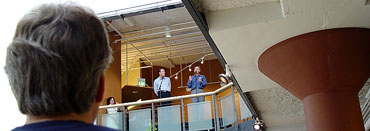
Howard Schultz (centre left), Jim Donald (right)
Monday, June 06, 2005
FLIGHT SERGEANT BERRY RESURFACES
Something I had always hoped to be able to do was to thank the family of Flight Sergeant Fred Berry, who saved my father’s life during the Battle of Britain (http://johnelkington.com/archive/inf-people-father.htm), sadly being shot down himself and killed shortly afterwards, on 1 September 1940. I had also posted photos of Berry on my blog on 6 February 2004, but we had failed to track the family down. So I was thrilled today when Berry’s granddaughter got in touch by e-mail, having come across this website and my reference to how her family tree interconnected with mine all those years ago. Given that today marks the 61st anniversary of D-Day, it’s one more reminder – alongside the constant B17 fly-pasts outside my Edgewater window – of how much we owe to the ‘Greatest Generation’.
[NOTE POSTED ON 25-08-2014: Some years later, she, her mother and my father would meet. It turned out that Fred Berry’s wife never mentioned his name after he was killed, so his daughter and granddaughter had no idea of his exploits until they came across the accounts on this blog.]
Sunday, June 05, 2005
EXPERIENCE MUSIC PROJECT
Back from Vashon Island, and with rain threatening, I walk from the Edgewater Hotel to the Space Needle, in search of Microsoft billionaire Paul Allen’s Experience Music Project (EMP: www.emplive.com). As I go, a B17 flies overhead (www.museumofflight.org/collections/craftdisplay.html?ID=23), a reminder of ‘Rosie the Riveter’ (www.rosietheriveter.org), D-Day (whose anniversary it is) and the huge contribution Boeing and Seattle made to the ultimate victory in WWII. Various of the people we have known in the Seattle area have been involved with Boeing, my cousin Hollister Sprague – who died in 1986 – as Mr Boeing’s lawyer, others as designers, engineers, photographers. (And as I type this up in the fading light, around 20.00, the B17 drones past again.)
As I twist and turn on my way to the Space Needle, I catch glimpses of Seattle’s port installations, with the giant gantry cranes towering like herds of metallic orange brontosauri. Musing that George Lukas was inspired by such cranes to produce his giant, lumbering white battle monsters in Star Wars, I shortly afterwards find myself standing behind Darth Vader, or at least a cutout version, inside the Science Fiction Museum.
Maybe it is my mood, but the EMP experience is flat, tacky and commercial. I was here in October 2000 for the ‘Digital Dividends’ conference (www.digitaldividend.org), shortly after the EMP opened in June of that year, and wasn’t hugely impressed then, either. The Beatlemania show, still advertised on the EMP website, has gone. Most of the displays strike me as second rate, a bit like an end-of-the-pier show, and the unbelievable electricity of performers like Jimi Hendrix and Bob Dylan – at least in the context of their times – is hard to detect. Ironically, I walk past a stall where Dylan, in later life, is explaining on video how dramatic the Sixties had been. You’d hardly guess it from the EMP version. You see clips of the civil rights marches, but the whole thing feels like History rather than an immersion in the era.
The Frank Gehry building in which the EMP and the Science Fiction Museum are housed is a real Curate’s Egg, good in parts, but somehow less than the sum of its parts. But every so often there is a bit of detailing that catches the eye, like penultimate last photo in this series. The last photo, at least for me, raises the question of how we could do the same list of things – jam, touch, learn, play – for sustainability that EMP aspires to (but, I think largely fails to do) for rock’n’roll.

B17 over Elliott Bay

Herds of metallic brontosauri
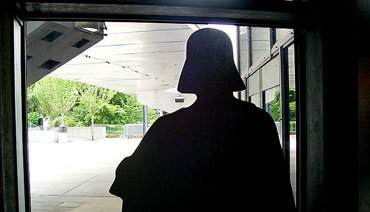
Darth Vader’s dark side

Bob Dylan and guitar geyser
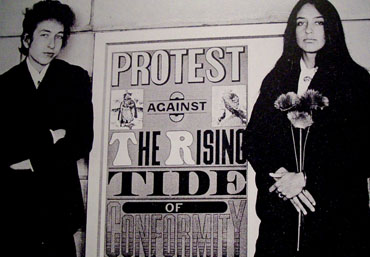
Dylan, Joan Baez and Tide of Conformity
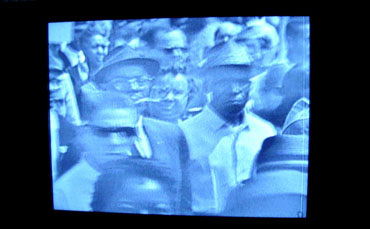
Civil rights marchers
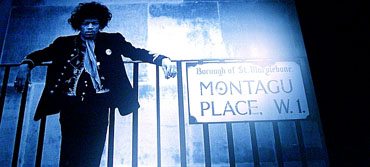
Jimi Hendrix

Frank Gehry’s undulations and tree
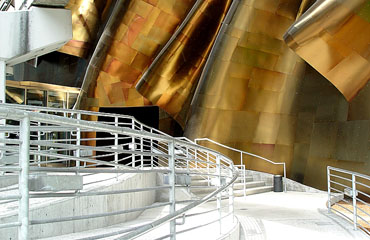
This works for me

How do we do this for sustainability?
FOOLHARDY KILLDEER
Breakfast this morning with close neighbours of the Turners – and good friends of ours from years back. Blake shows me where a pair of killdeer (www.nhptv.org/natureworks/killdeer.htm) have nested among the stones and logs on the foreshore. So vulnerable are they that his mother, Carol, has bought a water cannon of sorts to ward off predators like crows. Killdeer are precocious, able to run around amazingly soon after they break out of the egg, but I’m not sure I rate this pair’s chances of successfully raising a brood at all high. Later, Blake drives me back to Seattle, via one of the ferries visible in the background of the crow picture.
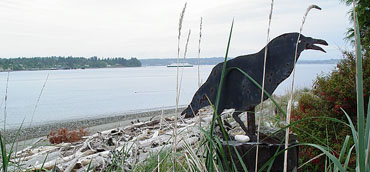
Metal version of one of the predators
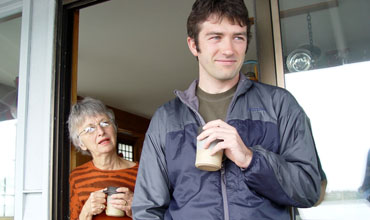
Carol and Blake, mother and son
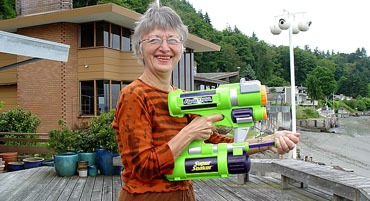
It’s the idea that counts
Saturday, June 04, 2005
OTTER AT WORK
Have always loved Ring of Bright Water and the like, so am partial to otters – though I think I have only seen them in the wild – once – in Scotland. This afternoon, as Clark and I watched the water, what he described as a river otter pretended to be the Loch Ness Monster a little way out from the beach. This was quite a large animal, with a long tail that would follow him down into the depths like a conger eel. Later on, I walked the short distance down to the beach to take a photo of the house – and surprised the same animal right by the jetty. He strolled to the water and swam away, repeatedly looking back over his shoulder, probably signalling his displeasure at being disturbed in his toilet.




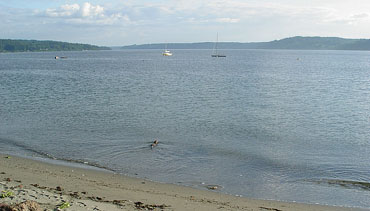
PUGET SOUND
Am staying with cousins – Charlotte and Clark Turner – in their beachside house on Vashon Island, on Puget Sound. We have a delightfully extended lunch with Chuck and Jeanne Branson, also cousins, who live across the water, their son David and his partner, Ruth. The Turner house has outlandishly wonderful views of the Sound and I can’t stop taking photographs, despite remembering the architect Moshe Safdie saying he threw his camera away because he ended up looking at everything through a rectangular frame.

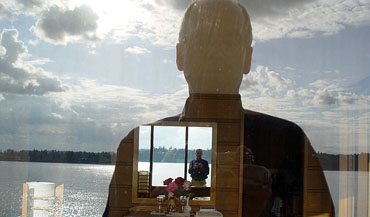


SOY BEAN POWERED
Walking down the Fontleroy Ferry Dock, to catch the ferry to Vashon Island, I was truck by the large message across the bridge of the vessel – declaring that it to be soybean-powered. Inside, posters informed passengers that this was in aid of reducing greenhouse emissions. But soybeans aren’t an unadulterated Good Thing for environmentalists. Quite apart from the GM issue which has disrupted the soybean trade to the EU, at the WWF conference in Vancouver last week they showed satellite photographs of Amazonia – with peculiarly patterned bites being taken out of the rainforest by new soybean farms. Apparently much of the production goes to feed livestock, used to satisfy the growing appetite for meat in Asia.
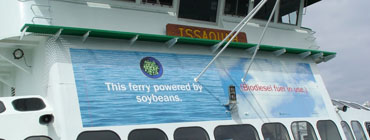
THE BRITISH INVASION

The Edgewater Hotel
Even in its revamped state, The Edgewater Hotel – where I am staying in Seattle – has struck me as a little odd. It juts out into the sea, atop one of the old piers, but its decor is like something from Twin Peaks. That said, had breakfast there this morning with Mark and Valerie Lee (he co-directs SustainAbility’s US business) and Maria Eitel of the Nike Foundation (http://www.nike.com/nikebiz/nikefoundation/home.jhtml) – and Maria told me something that made me feel slightly differently about it all. Apparently The Beatles stayed here in the Sixties, during ‘The British Invasion’, and their fans took to the waters around the hotel in a flotilla of small boats – or even tried to swim in the chilly waters of Elliott Bay. Checked: it was 1964 – and the nearby Experience Music Project ran an exhibition last year to celebrate the fortieth anniversary of America’s descent into Beatlemania (http://www.edgewaterfabfouroh.com). Those were the days, my friend, we thought they’d never end.
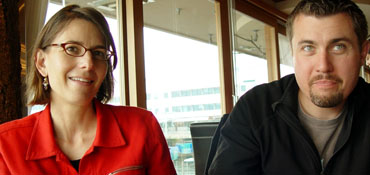
Maria and Mark
Friday, June 03, 2005
ROOM WITH A VIEW
My room on the Seattle waterfront looks out both onto an endless parade of ships and boats plying in and out of the harbour – and onto the take-off and landing lanes for Seattle airports. Looming in the foreground, a huge cruise liner. When Mark and I first see it this afternoon, I comment that it reminds me of the vast ships that I have seen docking and loading in Freemantle, Australia. They carry live sheep for slaughter in Saudi Arabia and other Muslim countries. The smell – indeed the insult to all the senses – was beyond words.
In the midst of it all, late this afternoon, a roiling in the waters and something animate surfaces briefly. With my normal glasses still somewhere in Beijing – and new ones being constructed somewhere a continent or two away – I can’t make out what this life-form is. But there’s reasurrance in the mystery.
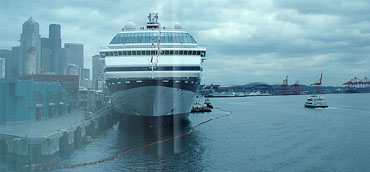
Docked
RATS
Fly down to Seattle in time for Mark Lee and I to have lunch with Chip Giller, founder and President of Grist (http://www.grist.org/about/). Then across to the hotel to drop bags and out with Mark to have a beer downtown and discuss future plans. As we leave the hotel, we pass a protest by plumbers and pipelayers, featuring a display of rats, one of which (not shown here) is the size of a small T. rex.
When I walk back, it strikes me that the dock next to the hotel is where Elaine, the girls and I saw Jacques Cousteau’s weird vessel the Alcyone in the mid-1980s. If you’re interested to see what the strange creature looked like, go to: http://www.cousteau.org/en/cousteau_world/our_ships/alcyone.php
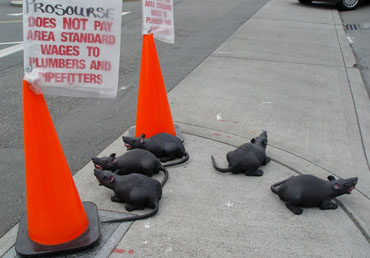
Rats 1

Rats 2
TBL IN BC AND OZ
My visit this week to British Columbia has persuaded me that there is still a great deal of life in the old triple bottom line concept – indeed, it seems that in many places it is only just beginning to ‘break’. And this week I was also notified by CSIRO of the launch of Australia’s first set of TBL accounts.
The island continent’s first triple bottom line account at a whole-economy level offers a full life cycle analysis of each of 135 economic sectors using ten macro-indicators. The financial indicators are profits, export propensity and import penetration. The social indicators are employment, income and government revenue (taxation). The environmental indicators are greenhouse emissions, energy use, water use and land disturbance. These macro-indicators are expressed as intensities per one dollar of final demand.
The report highlights the low export performance of the services sectors, relatively good outcomes for basic mining, the many challenges faced by domestic manufacturing in the face of globalisation, and the resource intensity of food and fibre industries. While one dollar might look much the same as another, where it is spent, can have vastly different outcomes for social and environmental issues.
The work is based on the integration of the financial input-output tables in the Australian national accounts with key social and environmental indicators. Both a summary and the full report in four volumes can be accessed at http://www.cse.csiro.au/research/balancingact/
Thursday, June 02, 2005
WHISTLER
As something of a reptile, I don’t like getting up early, so a 05.00 start to today wasn’t particularly welcome – except that there was already light in my eyrie-like, glass-walled 17th floor room. Picked up at 06.00 by Linda Coady (Vice-President for Sustainability, 2010 Winter Olympics) and Coro Strandberg, we drive north towards Whistler, where the Games will be held (http://www.tourismwhistler.com/about/2010_wintergames.asp).
Also with us: Jon O’Riordan, formerly Deputy Minister of the Ministry of Sustainable Resource Management in the British Columbia Provincial Government. It’s the first time we have met, though he is the twin brother of someone I have known for decades, Professor Tim O’Riordan of the University of East Anglia, who is also a member of SustainAbility’s Faculty – like Linda and Coro.
When we get to Whistler, we have a wonderful session with the Mayor of the town, Hugh O’Reilly, and some of the key people from the 2010 Winter Olympics team. Interesting to live in London, which is bidding for the 2012 Olympics, and to have visited in quick succession both Beijing (which is hosting the 2008 games) and now Whistler. Most sports leave me cold, but am increasingly interested in the potential of major sports events to either create positive economic, social and environmental regeneration or, at worst, to leave a trail of white elephants in their wake.
After a snatched sandwich lunch, I do a public lecture. Then back into the van and off south for several commitments in Vancouver, notably a public lecture which I do at the Robson Square Media Center. Capacity audience, Linda chairs and a most enjoyable evening. Then film a sequence for a couple of people who had heard me on the CBC programme a couple of days back and are making a film on idleness and productivity. By the time I get back to the hotel, a life of idleness is beginning to seem quite appealing.

Vancouver dawn

Whistler
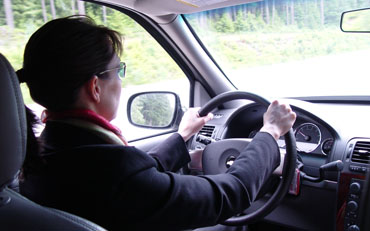
Homeward bound: Elizabeth Bowker at wheel
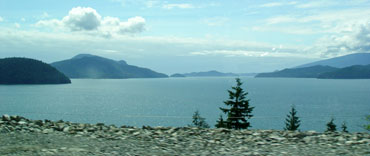
Blue blur
Wednesday, June 01, 2005
ANOTHER DAY IN VANCOUVER
Started off day with a media interview, then my keynote at the WWF conference on ‘Mobilizing Millions’, followed by energetic discussion session, then lunch with Jorgen Randers (one of the authors of The Limits to Growth), then an afternoon discussion panel, then a wine and cheese discusion with around 40 people at the amazing studio home of Joel and Dana Solomon. He is a sustainability-focused venture capitalist involved in e.g. the Tides Foundation (www.tidescanada.org), the Endswell Foundation (www.endswell.org) and Renewal Partners (www.renewalpartners.com).
Among many other interesting people I met today were Dr Claude Martin, the outgoing Director-General of WWF International; Chief Eleazar Anyaoku, President of WWF International and Chair of NEPAD; WWF-UK Chairman Christopher Ward, who it turns out was responsible for the section in the Daily Mirror in 1961 which triggered my first fund-raising venture, for the fledgling WWF launched that year; Monte Hummel, President Emeritus of WWF Canada; Mark Achbar, a producer of the film The Corporation; Tzeporah Berman, Program Director of Forest Ethics (www.forestethics.org); and Gregor Robertson of Happy Planet Foods (www.happyplanet.com), now in political office here.
Then – having somewhat regretfully handed back my complimentary tickets for the Barenaked Ladies concert this evening, I went off with Coro Strandberg to a dinner with a dozen or so people from business in the Vancouver area. Discussion whether a sustainability cluster could be developed in Vancouver or the wider British Columbia area. Dining room overlooked Vancouver’s famous steam clock. Inside the room a mouse was slowly dying, presumably poisoned. Encouraging …
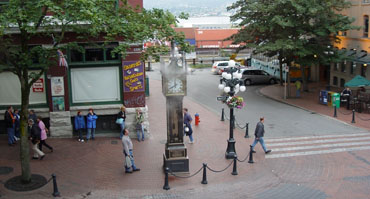
Steam clock

Catatonic mouse at the feast


